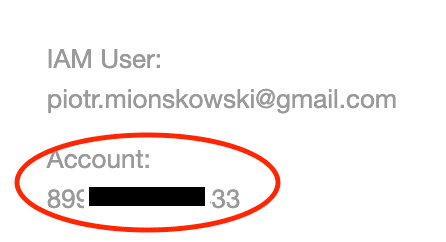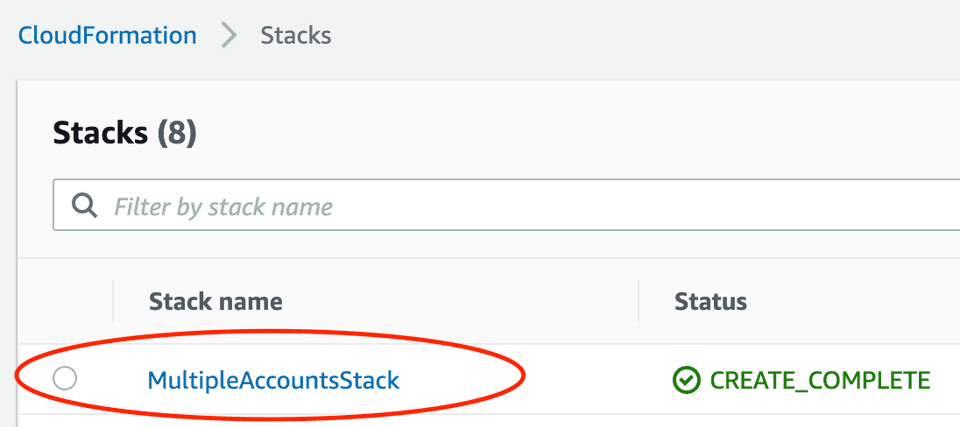Infrastructure as a code greatly improves traceability, repeatability and thus overall quality of the software systems built with it. With a correct setup development teams can now more easily spin up short-lived clones of systems or their parts. This gives a profound boost in both productivity but also ability to run automated regression or performance tests.
In this post I will show how to use aws-cdk to deploy multiple copies of the same application:
1. Using multiple AWS accounts.
2. Using a single AWS account.
Using multiple AWS accounts to deploy copies of the same aws-cdk application
By default, every aws-cdk Stack you create is environment-agnostic.
You can deploy an environment-agnostic stack with any AWS account granted you have enough entitlements.
Note that AWS account does not mean IAM user. A single AWS account can have multiple IAM users.
The cdk deploy command uses specified AWS profile or a default one.
Let us start with a bare bone app multiple-accounts generated with:
mkdir multiple-accounts && cd multiple-accounts
npx cdk init --language typescriptTo make our example more entertaining I added a single S3 Bucket to the MultipleAccountsStack:
import * as cdk from "@aws-cdk/core";
import * as s3 from "@aws-cdk/aws-s3";
export class MultipleAccountsStack extends cdk.Stack {
constructor(scope: cdk.Construct, id: string, props?: cdk.StackProps) {
super(scope, id, props);
new s3.Bucket(this, "MyBucket");
}
}I also created 2 AWS profiles for 2 AWS accounts, using aws configure, named blog-staging and blog-production for demonstration.
Deploy aws-cdk app using explicitly specified profile
For start let’s use --profile parameter to deploy our stacks:
> npx cdk deploy --profile blog-staging
MultipleAccountsStack: deploying...
MultipleAccountsStack: creating CloudFormation changeset...
...
✅ MultipleAccountsStack
Stack ARN:
arn:aws:cloudformation:eu-central-1:XXXXXXXXXX:stack/MultipleAccountsStack/0d3c7530-a318-11ea-ab8d-02b8022d5b40
> npx cdk deploy --profile blog-production
MultipleAccountsStack: deploying...
MultipleAccountsStack: creating CloudFormation changeset...
...
✅ MultipleAccountsStack
Stack ARN:
arn:aws:cloudformation:eu-central-1:YYYYYYYYYY:stack/MultipleAccountsStack/3a5cc690-a319-11ea-b00b-023cc2de05b4Note how XXXXXXXXXX and YYYYYYYYYY identifies, which AWS account deployed the stack.
The stack has the same name in both cases: MultipleAccountsStack
You can specify the AWS profile to use with AWS_PROFILE environment variable:
AWS_PROFILE=blog-production npx cdk deployLast but not least the standard AWS CLI environment variables work as well:
export AWS_ACCESS_KEY_ID=xxxx
export AWS_SECRET_ACCESS_KEY=yyy
export AWS_DEFAULT_REGION=eu-central-1
npx cdk deployPlease refer to the documentation for further details.
Benefits of using multiple AWS accounts to deploy aws-cdk app
The first advantage is how using multiple AWS accounts keeps aws-cdk code simple. The infrastructure code ignores details of the environment it runs in. This makes it possible to re-use it in other contexts. This approach also improves security. With multiple AWS accounts we minimise risk of aws-cdk installations affecting each other.
Downsides of using multiple AWS accounts to deploy aws-cdk app
The following example presents a first downside, or in reality a gotcha easy to miss. Say someone not well versed in AWS services decided to name the bucket:
new s3.Bucket(this, "MyBucket", {
bucketName: "important-assets",
});It will work fine when deployed for the first time. However, as soon as we try to deploy it to a second AWS account we get:
> npx cdk deploy --profile blog-production
(node:61539) ExperimentalWarning: Conditional exports is an experimental feature. This feature could change at any time
MultipleAccountsStack: deploying...
MultipleAccountsStack: creating CloudFormation changeset...
0/3 | 10:56:27 AM | CREATE_IN_PROGRESS | AWS::S3::Bucket | MyBucket (MyBucketF68F3FF0)
0/3 | 10:56:27 AM | CREATE_IN_PROGRESS | AWS::CDK::Metadata | CDKMetadata
1/3 | 10:56:27 AM | CREATE_FAILED | AWS::S3::Bucket | MyBucket (MyBucketF68F3FF0) important-assets already existsSome AWS resources names need a unique name in a given region across all AWS accounts.
The difficulty to create AWS accounts on a developer whim is the second downside. Remember that want to re-create environments with changed parts. Forcing a new AWS account may turn out problematic and create a management headache too big to ignore.
Using single AWS account to deploy copies of the same aws-cdk application
As we saw above by default the Stack name gets derived from the class name.
Thankfully one can easily override that behaviour.
In my projects I prefer using a DEPLOY_ENV environment variable to specify the deployment target.
DEPLOY_ENV=staging npx cdk deployWe need to adjust our app definition so that DEPLOY_ENV is recognized.
Using DEPLOY_ENV variable inside aws-cdk entry point
The aws-cdk app typically resided as bin folder. In our example it is the bin/multiple-accounts.ts file.
With the following adjustment we can deploy our app to many targets:
#!/usr/bin/env node
import "source-map-support/register";
import * as cdk from "@aws-cdk/core";
import { MultipleAccountsStack } from "../lib/multiple-accounts-stack";
const deployEnv = process.env.DEPLOY_ENV || "dev";
const app = new cdk.App();
new MultipleAccountsStack(app, deployEnv + "-MultipleAccountsStack");During deployment aws-cdk will create a CloudFormation stack named ${process.env.DEPLOY_ENV}-MultipleAccountsStack:
Using DEPLOY_ENV consistently inside aws-cdk application
As I mentioned above one can easily fall into unique name traps. In order to avoid naming conflicts and to apply consistent naming scheme I often define a helper similar to the following.
function deployEnv() {
return process.env.DEPLOY_ENV || "dev";
}
function envSpecific(logicalName: string | Function) {
const suffix =
typeof logicalName === "function"
? logicalName.name
: logicalName;
return `${deployEnv()}-${suffix}`;
}
export class MultipleAccountsStack extends cdk.Stack {
constructor(scope: cdk.Construct, props?: cdk.StackProps) {
super(scope, envSpecific(MultipleAccountsStack), props);
new s3.Bucket(this, "MyBucket", {
bucketName: envSpecific("important-assets"),
});
}
}With the above change our cdk app entry point no longer decides how to name the stack. Note however, that you can still allow passing the name through constructor when you need it.
Using envSpecific helper keeps important resource names consistent.
More importantly it allows deploying as many copies of aws-cdk app as we like.



